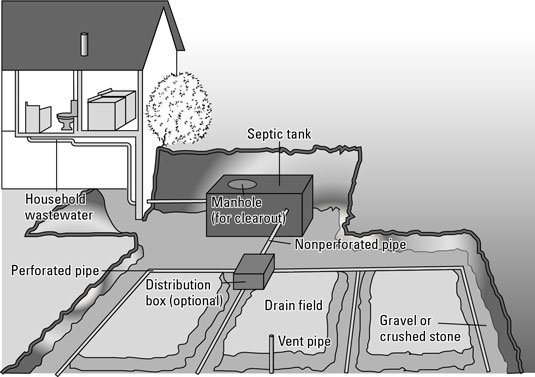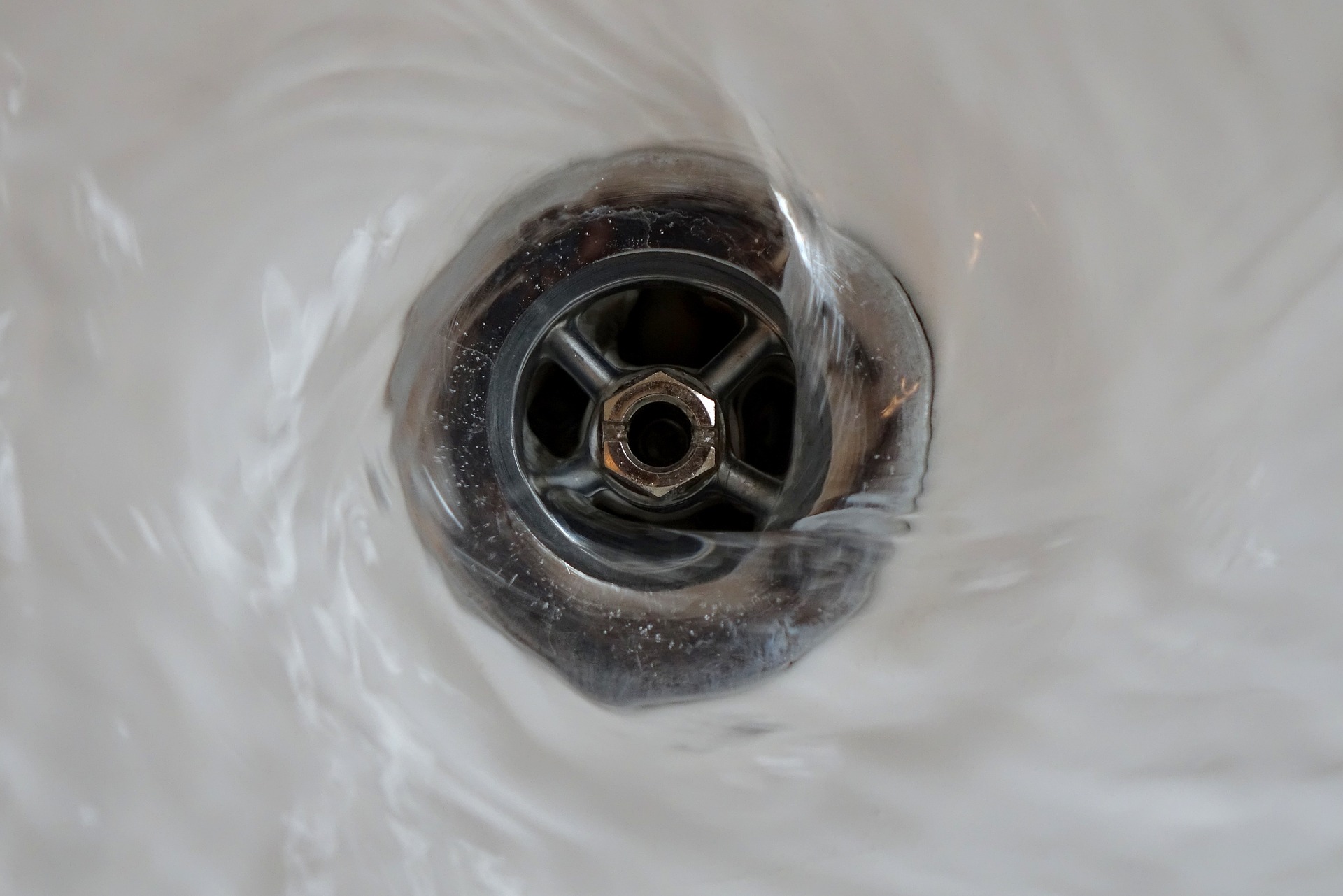
Home Maintenance •
September 27, 2022
Septic System Essentials

A septic system primarily consists of a septic tank and leach field that are connected by a series of pipes leading from the home’s wastewater drainage line through the tank and out to the leach field. If the septic system is properly maintained, the tank can last between 15 to 40 years, while the leach field may be useable for more than 50 years. Make sure to stay on top of these important maintenance tasks to help keep your septic system healthy and functional for as long as possible.
What Is a Leach Field?
In a septic system, wastewater flows into the septic tank, where the solids are filtered out and the liquid waste passes through the outlet baffle and into a series of perforated pipes that allow the liquid to gradually seep into the ground where it is naturally filtered by the soil. A leach field, also know as a drain field, is made up of pipes and the surrounding area where the liquid waste is released.
Pump the Septic Tank Regularly
One of the most important tasks that you will need to arrange about once every two to five years is having the septic tank pumped. Whether you will need to have it pumped every 2-5yrs really depends on the size of the tank, the number of people living in the home, and the type of waste that is put into the septic system.
For instance, a home equipped with garbage disposal is great when you are connected to a municipal wastewater system, but these appliances can significantly increase the amount of solid waste that flows into a septic system, resulting in more frequent pumping.
Inspect the System for Leaks
Regularly walk around the septic system and keep an eye out for any areas around the tank where the grass is significantly more lush or dense that other areas of the yard. A leaking tank provides ample nutrition for plant life and can also give off strong sewage smells. However, in most cases, it will be difficult to find any leaks in the tank while it is still being used because the tank is buried underground. The best time to check for leaks in the septic tank is when it is being pumped. Its also a good idea to inspect the baffles to make sure that they are not missing, broken, or deteriorated.
What are Baffles?
Baffles restrain and redirect the flow of incoming and outgoing wastewater inside the septic tank. They prevent scum from clogging up both the inlet and outlet pipes. A septic tank with a damaged or missing baffle is highly susceptible to clogs and backups.
Clearly Mark off and Maintain the Leach Field
The leach field is a sensitive part of your septic system that needs to be protected at all times. It’s made up of several perforated pipes that extend the entire length of the leach field, and while this area can be walked on without and issue, the weight from cars, trailers, and semi-permanent structures can damage the buried pipes. To help avoid any damage to the septic system, it’s important to clearly mark off the leach field and inform any guests that this area of the yard cannot support heavy loads.
The plant life and drainage around a leach field also need to be kept in check. Water from the home should flow away from the leach field to avoid flooding the area and any trees, bushes, or shrubs need to be removed so that the roots don’t grow into the pipes. However, you can and should grow grass on the leach field because grass absorbs water to reduce flooding, the roots don’t grow too deep, and the grass helps to prevent erosion.
Limit Water Usage and Household Waste
A simple process in septic system maintenance is just paying attention to the amount and contents of what you put down the drain. The septic system can be overfilled by an excess of liquid waste.
A high amount of solid waste is also a bad thing, causing the sludge in the septic tank to pile up quickly and increasing the pumping frequency of the system. Dump fats and uneaten food into the food waste recycling or compost pile in the yard instead of down the sink.
Keep in mind that a septic system uses bacteria to break down the waste, so by pouring powerful cleaning solutions down the drain, you are harming the bacteria and reducing the function of the septic system. Use cleaners that are labeled as safe for septic systems to avoid killing the natural bacteria in the tank.
Use a Bacteria Additive
The waste that comes from the home doesn’t simply sit in the septic tank and collect until its time for the tank to be pumped. It is filtered by weight, allowing the solids to sink to the bottom of the tank and releasing the liquid waste to the leach field where it can be filtered by the soil. The waste that remains in the tank is gradually broken down by bacteria that help to keep the septic system healthy and functional.
However, the bacteria in the system are vulnerable to powerful cleaning solutions, antibacterial soaps, and drain cleaners, so in order to protect the naturally occurring bacteria in the septic system, you can add new bacteria that break down unnatural substances, like detergents and soaps.
Install an Effluent Filter
In order to help increase the life of the leach field and prevent clogs that could lead to flooding or septic backups, it’s a good idea to have an effluent filter installed. This filter is installed on the outlet of the septic tank and grease trap, creating a barrier that keeps solids out of the leach field dispersal system.
Once installed, the effluent filter functions for about three to five years before it needs to be cleaned. It’s advised to have the filter cleaned at the same time as the tank is pumped to reduce repeat visits and maintenance costs. You can also clean them yourself. Just simply pull the filter out, take a garden hose, and spray off the filter.
Check the Leach Field for Clogs
Even when you limit the water and solid waste that comes from the home and regularly inspect and pump the septic tank, the leach field can still become clogged. This is especially true during periods of wet and rainy weather, because the excess water can flood the system, increasing the amount of solid waste that passes through into the leach field.
Flooding can also occur when a large amount of snow begins to melt over several days, so it’s advised to walk across the leach field during rainy or wet weather to check for sewage smells or especially fast and lush growing grass that could indicate the drain field is clogged. Other signs of a clogged leach field include slow-running drains, backed-up plumbing, mushy ground, and standing water.
Keep Accurate Maintenance Records
Regardless of the type of maintenance that is performed on the system, it’s important to keep accurate records of the results. You can reference this information to decide on the amount and frequency with which you should be putting bacteria additives into the system. Any inspection results that fall outside of the normal expectations for your system based on previous records can also help to highlight any problems before they become too much of an issue to manage.
Another good reason to keep clear, concise, and detailed maintenance records is so that you have them available for any prospective buyers if you decide to sell the home. Septic systems can scare off some people, but with a full set of comprehensive maintenance records, your home is sure to be more appealing than a similar property with an unknown septic system history.
-Article courtesy of English Sewage


 Facebook
Facebook
 X
X
 Pinterest
Pinterest
 Copy Link
Copy Link



